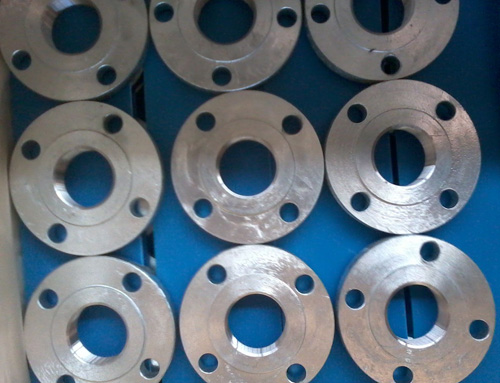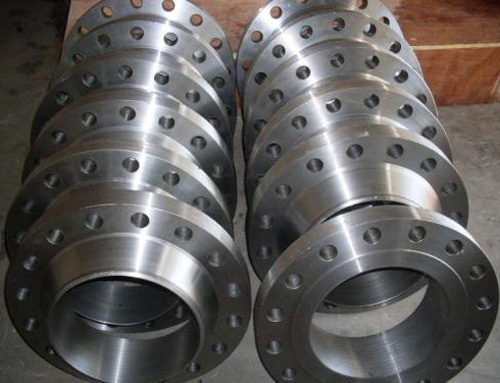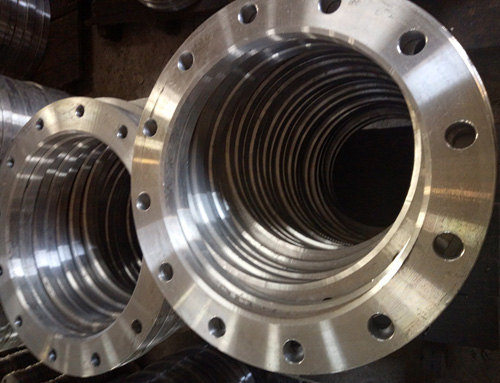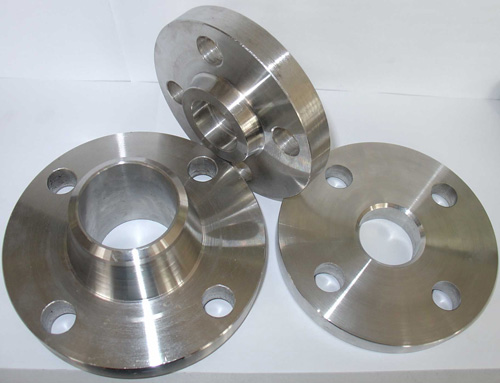The influence of various chemical elements on the properties
Carbon (C)
Carbon is the main element second only to iron, and it directly affects the strength, plasticity, toughness and welding performance of steel.
When the carbon content in steel is below 0.8%, as the carbon content increases, the strength and hardness of the steel increase, while the plasticity and toughness decrease; but when the carbon content is above 1.0%, as the carbon content increases, Increasing, the strength of the steel decreases.
With the increase of carbon content, the welding performance of steel becomes worse (steel with carbon content greater than 0.3% has a significant decrease in weldability), cold brittleness and aging sensitivity increase, and atmospheric corrosion resistance decreases.
Silicon (Si)
Silicon is a kind of deoxidizer, its deoxidizing effect is stronger than manganese, and it is a beneficial element in steel. When the silicon content is low, it can increase the strength of the steel without significant impact on plasticity and toughness. However, when the silicon content exceeds 0.8% to 1.0%, the plasticity decreases, especially the impact toughness is significantly reduced.
Low carbon steel with a silicon content of 1% to 4% has extremely high magnetic permeability and is often used in the electrical industry and silicon steel sheets. However, as the silicon content increases, the welding performance of steel will be reduced.
Manganese (Mn)
Manganese is added to steel as an element for deoxidation and desulfurization, and is a beneficial element in steel.
Manganese has a strong ability to deoxidize and desulfurize. It can combine with sulfur to form MnS, thereby eliminating the harmful effects of sulfur to a considerable extent and significantly improving the hot workability of steel.
At the same time, manganese has a good effect on the mechanical properties of carbon steel, and it can improve the hardness, strength and wear resistance of steel. The manganese content is less than 0.8%, which can greatly increase the yield limit and strength limit of carbon steel while maintaining (or only slightly reducing) the original plasticity and impact toughness.
Manganese also has an effect on the welding performance of steel. When the manganese content is very low, manganese mainly plays the role of eliminating hot brittleness. At this time, the influence of manganese on welding performance, especially when the sulfur content is slightly higher, is beneficial; but when the manganese content far exceeds the elimination of hot brittleness At the necessary content, the excess manganese will significantly increase the supercooling ability of austenite. At this time, manganese mainly plays a role in increasing the formation of cold cracks, which will make the welding performance of the steel worse.
Phosphorus (P)
Phosphorus is a harmful impurity that is difficult to remove in steel, which will increase the cold brittleness of steel and damage the welding performance of steel. The cause of "cold brittleness" is that phosphorus forms a hard and brittle compound Fe2P.
In addition, phosphorus can improve cutting performance and corrosion resistance, so the phosphorus content can be appropriately increased in free-cutting or weathering steel.
Sulfur (S)
Sulfur mainly comes from steelmaking raw materials, and it is difficult to remove it during steelmaking. Sulfur exists in steel in the form of sulfide inclusions, which has an adverse effect on the plasticity, toughness, welding performance, thickness direction performance, fatigue performance and corrosion resistance of steel.
Among them, the most harmful is the formation of FeS with iron and the formation of Fe-FeS binary low-melting eutectic, which causes the steel to become brittle and easy to crack at 800~1200℃, that is, "hot brittleness".
Oxygen (O)
Oxygen is a harmful impurity element. Almost all oxygen in steel exists in the form of oxides. The total amount of various oxides in steel increases with the increase of oxygen content. These oxide impurities have an impact on the mechanical properties of steel. Negative Effects.
As the oxygen content in the steel increases, the plasticity and impact toughness of the steel decrease, and the oxide inclusions reduce the corrosion resistance and wear resistance of the steel, making cold stamping properties, forging workability and cutting workability worse.
Nitrogen (N)
The effect of nitrogen on the properties of steel is similar to that of carbon and phosphorus. As the nitrogen content increases, the strength of the steel can be significantly increased, and the plasticity, especially the toughness, is also significantly reduced, the weldability becomes worse, and the cold brittleness becomes worse; at the same time, it increases the aging tendency and Cold brittleness and hot brittleness damage the welding performance and cold bending performance of steel. Therefore, the nitrogen content in steel should be minimized and limited. It is generally stipulated that the nitrogen content should not be higher than 0.018%.
Nitrogen can reduce the adverse effects of aluminum, niobium, vanadium and other elements, improve the performance of steel, and can be used as an alloy element of low-alloy steel.
Hydrogen (H)
Hydrogen is also a harmful element in steel. Like oxygen and nitrogen, gaseous elements have extremely low solubility in solid steel. They dissolve into molten steel at high temperatures, and accumulate in the structure when they are too late to escape and form high-pressure fine pores, which make the steel plastic, toughness and fatigue strength. If it decreases sharply, it will cause cracks and brittle fracture in severe cases. It is a harmful element that must be strictly controlled.
Chromium (Cr)
Chromium can significantly improve the strength, hardness and wear resistance of steel, but at the same time reduce plasticity and toughness. Chromium can also improve the oxidation resistance and corrosion resistance of steel, so it is an important alloying element for stainless steel and heat-resistant steel.
Nickel (Ni)
Nickel can increase the strength of steel while maintaining good plasticity and toughness. Nickel has high corrosion resistance to acids and alkalis, rust and heat resistance at high temperatures.
Molybdenum (Mo)
Aluminum can refine the grain of steel, improve hardenability and thermal strength, and maintain sufficient strength and creep resistance at high temperatures (long-term deformation under stress at high temperatures is called creep). The addition of molybdenum to structural steel can improve mechanical properties and can also inhibit the brittleness of alloy steel caused by fire.
Titanium (Ti)
Titanium is a strong deoxidizer, it can make the internal structure of steel compact, refine the grain; reduce aging sensitivity and cold brittleness, and improve welding performance. Adding proper amount of titanium to some austenitic stainless steels can avoid intergranular corrosion.
Vanadium (V)
Vanadium is an excellent deoxidizer for steel. Adding 0.5% vanadium to the steel can refine the structure grains and improve the strength and toughness. The carbide formed by vanadium and carbon can improve the resistance to hydrogen corrosion under high temperature and high pressure.
Niobium (Nb)
Niobium can refine the grains and reduce the overheating sensitivity of steel, and increase the strength, but the plasticity and toughness are reduced. Adding niobium to ordinary low-alloy steel can improve the resistance to atmospheric corrosion and hydrogen, nitrogen, and ammonia corrosion at high temperatures. Niobium can also improve welding performance. Adding niobium to austenitic stainless steel can prevent intergranular corrosion.
Copper (Cu)
Copper can improve strength and toughness, and has good resistance to atmospheric corrosion. The disadvantage is that it is prone to hot brittleness during hot working, and the plasticity is significantly reduced when the copper content exceeds 0.5%. When the copper content is less than 0.5%, it has no effect on the welding performance.
Boron (B)
Adding a small amount of boron to the steel can improve the compactness and hot rolling performance of the steel, and increase the strength.
Aluminum (Al)
Aluminum is a commonly used deoxidizer in steel. Adding a small amount of aluminum to steel can refine grains and improve impact toughness. Aluminum also has oxidation resistance and corrosion resistance. The combination of aluminum, chromium and silicon can significantly improve the high-temperature non-skinning performance and high-temperature corrosion resistance of steel. The disadvantage of aluminum is that it affects the hot workability, welding performance and cutting performance of steel.
Tungsten (W)
Tungsten has a secondary hardening effect, which makes the steel red-hardened, improves wear resistance, and has similar effects on the hardenability, tempering stability, mechanical properties and thermal strength of steel as molybdenum, which slightly reduces the oxidation resistance of steel. .
Lead (Pb)
Lead can improve machinability. Lead-based free-cutting steel has good mechanical properties and heat treatment properties. Due to environmental pollution and harmful effects in the recycling and smelting process of scrap steel, lead has a tendency to be gradually replaced .









